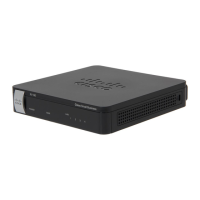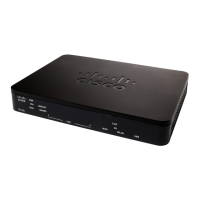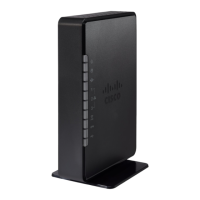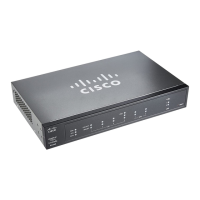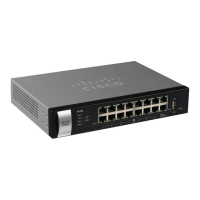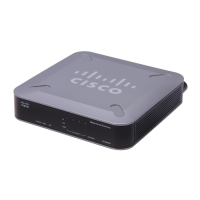Configuring the Wireless Network (Cisco RV180W)
Configuring Basic Wireless Settings
Cisco RV180/RV180W Administration Guide 66
3
802.11i standard was being prepared. It supports TKIP/AES encryption. The
personal authentication is the preshared key (PSK) that is an alphanumeric
passphrase shared with the wireless peer.
• WPA Enterprise—Allows you to use WPA with RADIUS server
authentication.
• WPA2 Personal—WPA2 is the implementation of security standard
specified in the final 802.11i standard. It supports AES encryption and this
option uses preshared key (PSK) based authentication.
• WPA2 Personal Mixed—Allows both WPA and WPA2 clients to connect
simultaneously using PSK authentication.
• WPA2 Enterprise—Allows you to use WPA2 with RADIUS server
authentication.
• WPA2 Enterprise Mixed—Allows both WPA and WPA2 clients to connect
simultaneously using RADIUS authentication.
STEP 7 The Encryption Type appears based on the type of network you chose in Step 3:
• WPA Personal, WPA Enterprise, WPA2 Personal Mixed, WPA2 Enterprise
Mixed—TKIP+AES
• WPA2 Personal, WPA2 Enterprise—AES
STEP 8 If you chose WEP:
a. In the Authentication field, choose Open System or Shared Key. If you choose
Open System, a wireless client doesn't need to provide a shared key in order to
access the wireless network. Any client can associate to the router. If you
choose Shared Key, a wireless client must provide the correct shared key
(password) in order to access the wireless network.
b. Select the Encryption Type (64- or 128-bit WEP). The larger size keys provide
stronger encryption, making the key more difficult to crack (for example, 64-bit
WEP has a 40-bit key which is less secure than the 128-bit WEP, which has a
104-bit key).
c. (Optional) In the WEP Passphrase field, enter an alphanumeric phrase (longer
than eight characters for optimal security) and click Generate Key to generate
four unique WEP keys in the WEP Key fields below.
d. Select one of the four keys to use as the shared key that devices must have in
order to use the wireless network. If you did not generate a key in Step 7c,
enter a key directly into the WEP Key field. The length of the key should be 5
ASCII characters (or 10 hexadecimal characters) for 64-bit WEP and 13 ASCII

